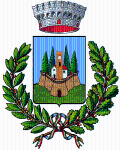Descrizione
Con il termine canonica si intende, genericamente, indicare una precisa porzione di antiche chiese parrocchiali alle quali era unita la casa del parroco, detta appunto canonica, sia per l'antica consuetudine ecclesiastica dei cappellani di convivere canonicamente nella casa del pievano loro superiore, sia perché molte chiese di campagna furono priorati veri e propri.
Intorno al 1000 i Canonici del Duomo di Siena decidono di fondare una nuova abbazia e scelgono una collina molto panoramica in un bosco di cerri, non lontana dalla città: nasce così la Canonica a Cerreto. La zona, al confine tra le terre di Siena e Firenze, assiste ben presto allo scontro tra le due repubbliche, il cui apice venne raggiunto nel 1260 con la celebre battaglia di Monteaperti. Si ha notizia che anche l’ Imperatore Arrigo VII si sia accampato nei dintorni di Canonica a Cerreto.
Nel '400 Canonica a Cerreto è acquistata dalla nobile famiglia Cerretani, che apporta grandi trasformazioni all'edificio per renderlo più simile ad una dimora rinascimentale, fino a che nel '700 la Curia di Siena decide di riprendersi la proprietà. Il Vescovo, che era solito trascorrere a Canonica a Cerreto l'estate, effettua grandi modifiche: l'interno della chiesa viene restaurato in stile settecentesco e le sale vengono affrescate da pittori senesi.
Oltre quarant'anni fa la proprietà torna ad essere privata, ma la cura e l’attenzione per la storia non mutano, garantendo l’attenta conservazione di uno degli edifici più antichi del territorio comunale di Castelnuovo Berardenga, ma si uniscono alla valorizzazione della produzione agricola, proseguendo quella la tradizione vitivinicola avviata con la costruzione della prima cantina contestualmente alla nascita della Canonica.
English version:
The term rectory generally means a specific part of old parish churches to which the priest's house – namely, the rectory – was attached, due to both the ancient ecclesiastical custom of priests living in the house of their superior parish priest, and to the fact that many country churches were true priories.
Around the year 1000, the Canons of the Duomo di Siena decided to found a new abbey and chose a very panoramic hilltop in a turkey oak wood not far from the city; thus the Canonica a Cerreto came into being. The area, on the boundary between the territories of Siena and Florence, soon witnessed the clash between the two republics, which peaked in 1260 with the famous battle of Monteaperti. It is said that even the Emperor Arrigo VII set up camp around the Canonica a Cerreto.
In the1400s the Canonica a Cerreto was acquired by the noble Cerretani family, which significantly altered the building to make it more similar to a renaissance residence, then in the 1700s the Curia of Siena decided to take the property back. The bishop, who usually summered there, made major changes: the interior of the church was renovated in 18th-century style and the rooms of the main building were frescoed by Sienese painters.
Over forty years ago, the property again became privately owned, but with an unchanging attentiveness to its history that guaranteed the careful conservation of one of the oldest buildings in the municipal territory of Castelnuovo Berardenga. In addition, the property's agricultural production was enhanced, continuing the winemaking tradition that had begun with the construction of the first wine cellar at the time of the Canonica's foundation.
Modalità d'accesso
sempre aperto
Indirizzo
Punti di contatto
Ultimo aggiornamento: 4 marzo 2024, 12:30

